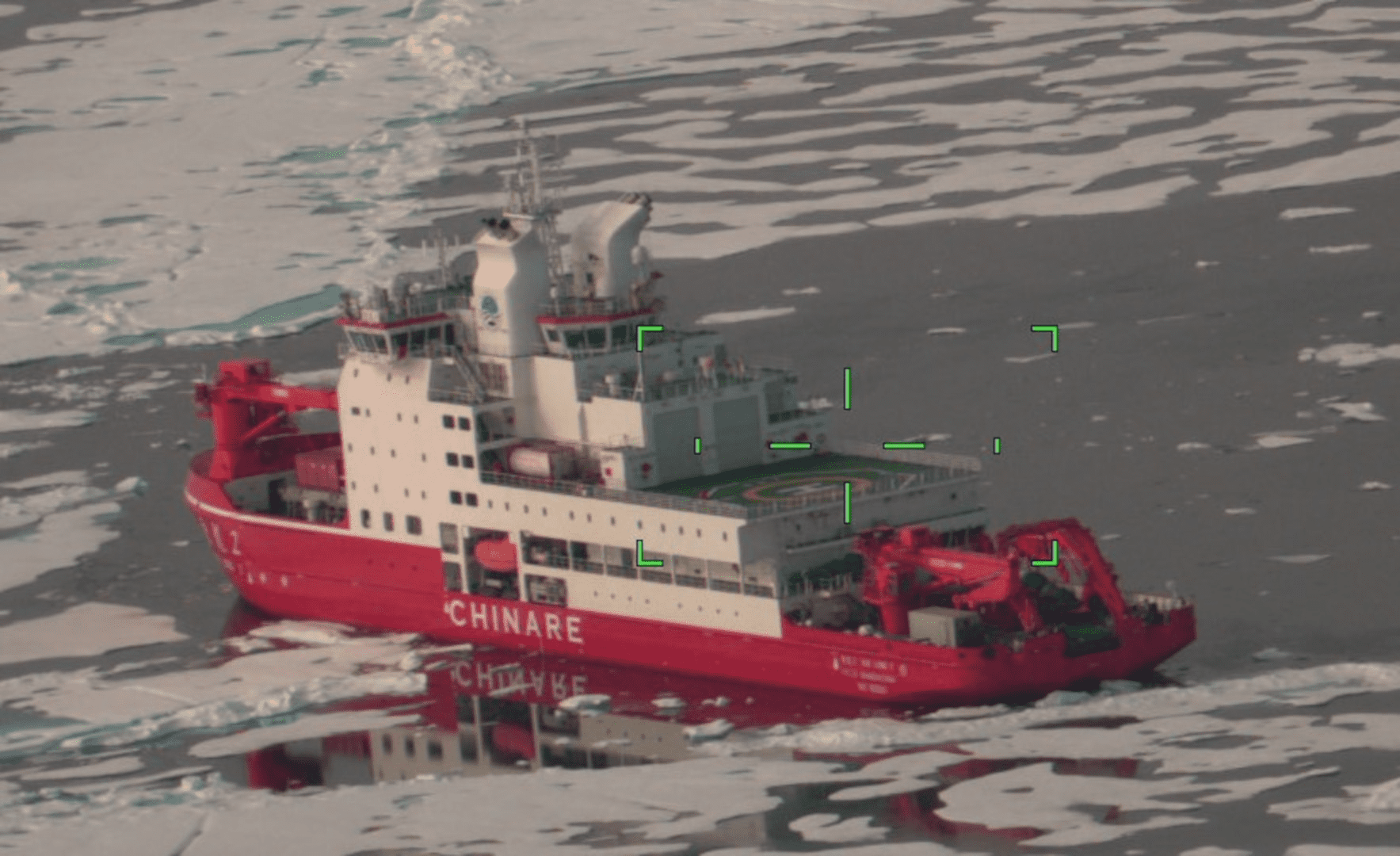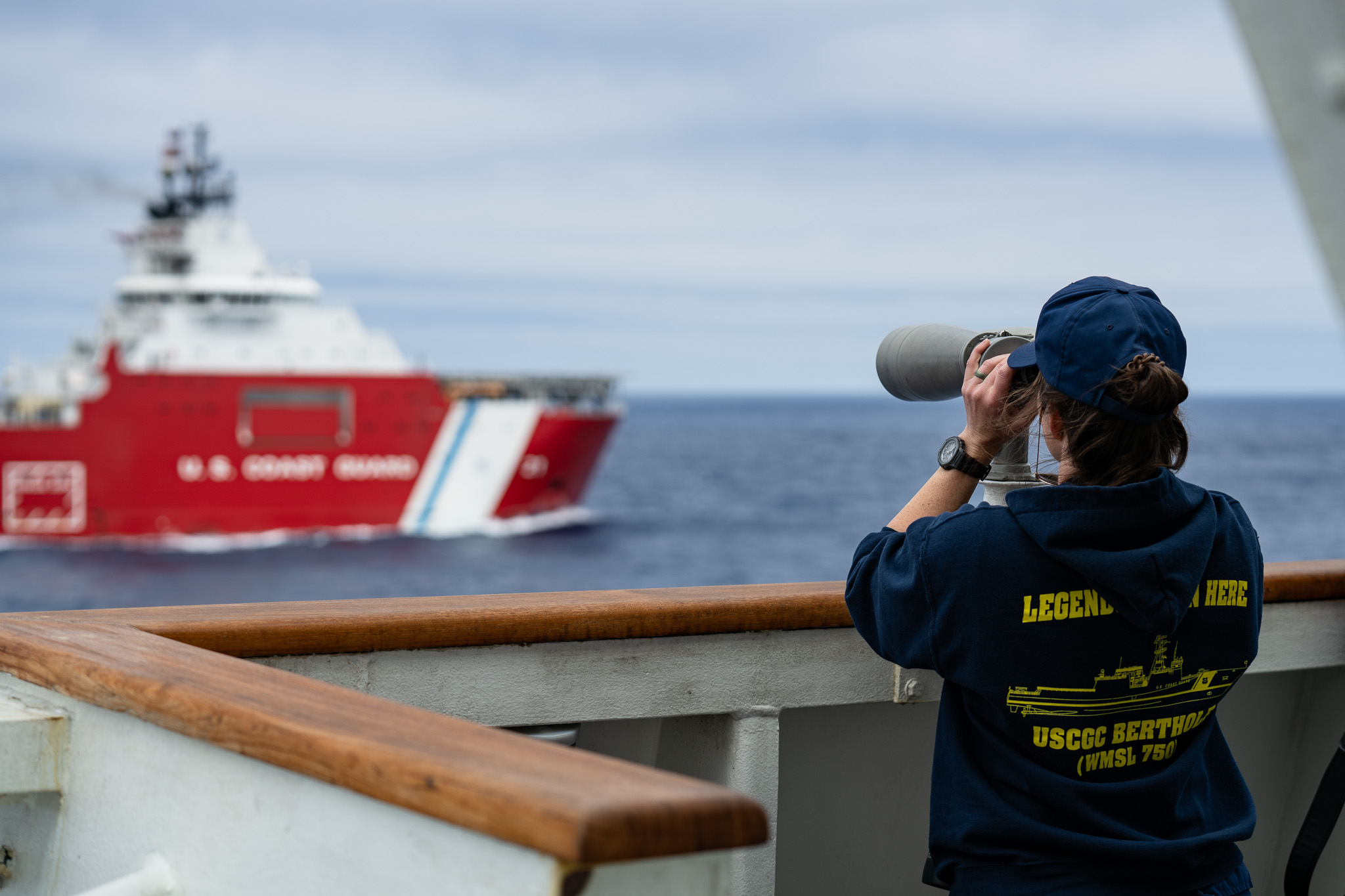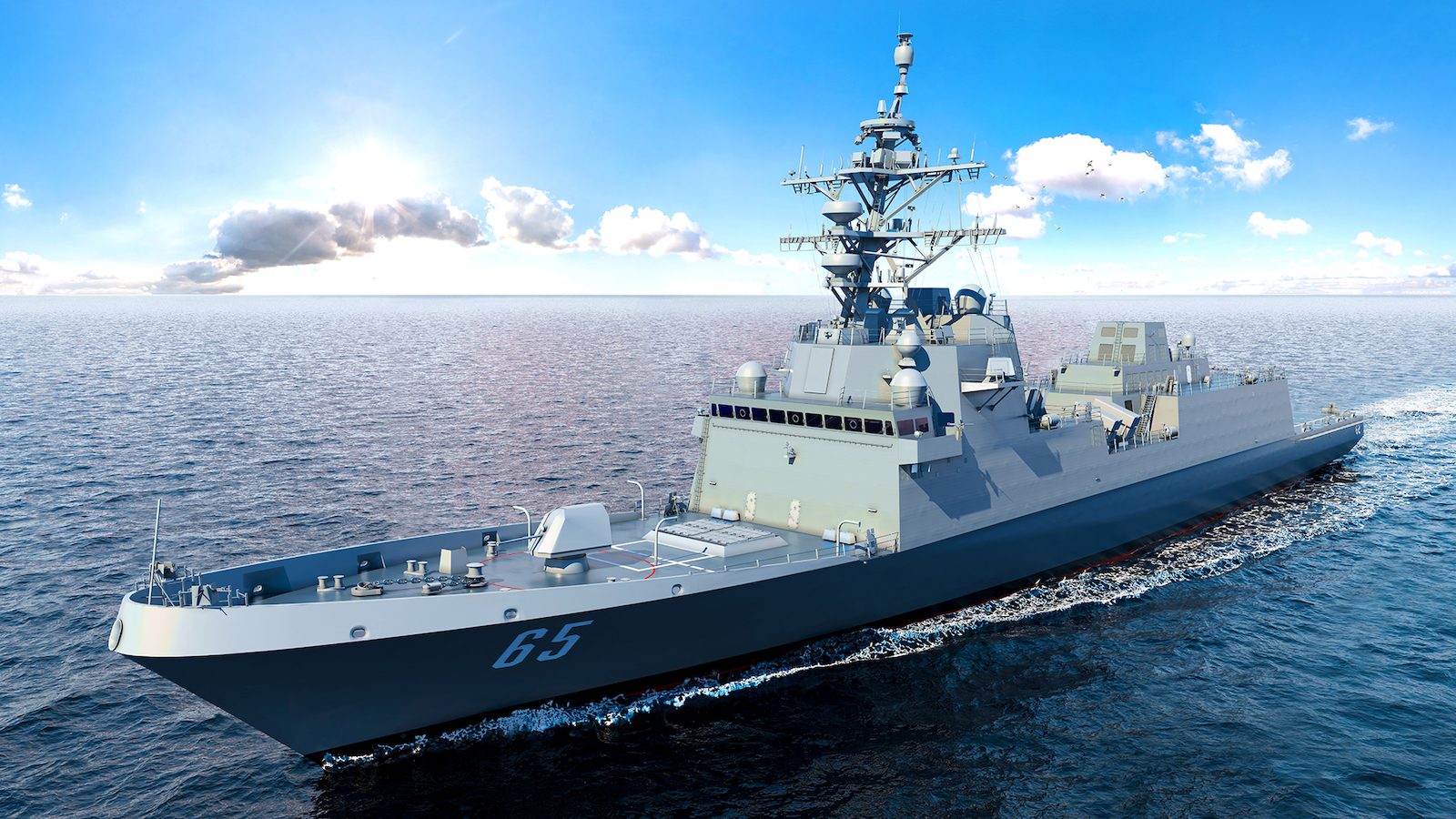The U.S. Coast Guard has responded to Chinese activity on the extended U.S. Continental Shelf (ECS) approximately 290 nautical miles north of Utqiagvik, Alaska. The service dispatched a Coast Guard C-130J Hercules from the Air Station Kodiak around 1100 nautical miles to the south.
Xue Long 2 operated around 130 nautical miles within the ECS boundary. The U.S. has exclusive rights to conserve and manage the living and non-living resources of its ECS, the Coast Guard said in a statement.
“The U.S. Coast Guard, alongside partners and other agencies, vigilantly monitors and responds to foreign government vessel activity in and near U.S. waters to secure territorial integrity and defend sovereign interests against malign state activity,” said Rear Adm. Bob Little, Commander of the U.S. Coast Guard Arctic District.
Xue Long 2 is China’s first domestically-built icebreaker. Since entering into service in 2019 it has completed 6 Antarctic and 4 Arctic missions.
The U.S. Coast Guard aren’t the only ones keeping an eye on the Chinese vessel. Canadian forces deployed a CP-140 surveillance plane in the vicinity of Xue Long 2 last weekend as it passed through the Bering Strait, according to a spokesperson for the Canadian military.
“We will continue to conduct activities needed to detect, deter and defend against potential threats in, over and approaching Canada,” said Maj. Alexander Naraine, a spokesperson for the military’s joint operations centre according to Canadian public broadcaster CBC.
“The vessel, Xue Long 2, is not currently in Canadian territorial waters. The Canadian Joint Operations Command is actively monitoring the vessel Xue Long 2 with a CP-140 Aurora aircraft, based out of Alaska.”
U.S. and Canadian forces will have their hands full tracking a number of Chinese icebreaking research vessels headed for the Arctic this summer. Last summer two Russian and two Chinese border patrol and coast guard ships passed through the Bering Strait within a few nautical miles of Alaska.
“China has a legitimate interest in the High Seas of the Arctic Ocean, per UNCLOS, says Elizabeth Buchanan, a polar geopolitics expert at the Australian Strategic Policy Institute. “These waters off Alaska are far from this zone, so we know this is signaling. Given the immense research linkages with Russia, one would think Beijing would simply veer left towards the Russian Arctic Zone, again the vessel has not. This is a political signal masked as scientific research.”
In addition to Xue Long 2, China has two other vessels en route to the Arctic. Two newly-launched research icebreakers Zhongshandaxue Ji Di and Ji Di departed China over the last week and are sailing north in direction of the Bering Strait.
A fourth research vessel Tan Suo San Hao is also expected to head for the Arctic as it has received a permit for Russia’s Northern Sea Route.
The U.S. Coast Guard’s medium icebreaker Healy is currently operating to the north of Alaska around 500 nautical miles to the east of Xue Long 2. The Coast Guard said the Healy is studying sea ice and ocean movement as part of its annual Arctic deployment.
“Of interest is the way in which allies diverge in response to this Chinese behavior. Australia – in the Southern Ocean region – simply assured nationals the Chinese research vessel lurking was conducting scientific research – something wholesome and not nebulous. The U.S. response to scientific vessels off the Alaskan coast is markedly different – a robust response backed by coast guard assets,” concluded Buchanan.
Meanwhile, the service’s newest icebreaker acquisition Storis has arrived in Alaska ahead of a commissioning ceremony in August. Subsequent to the formal entry into service Storis is expected to conduct its first Arctic patrol.

 Join The Club
Join The Club











